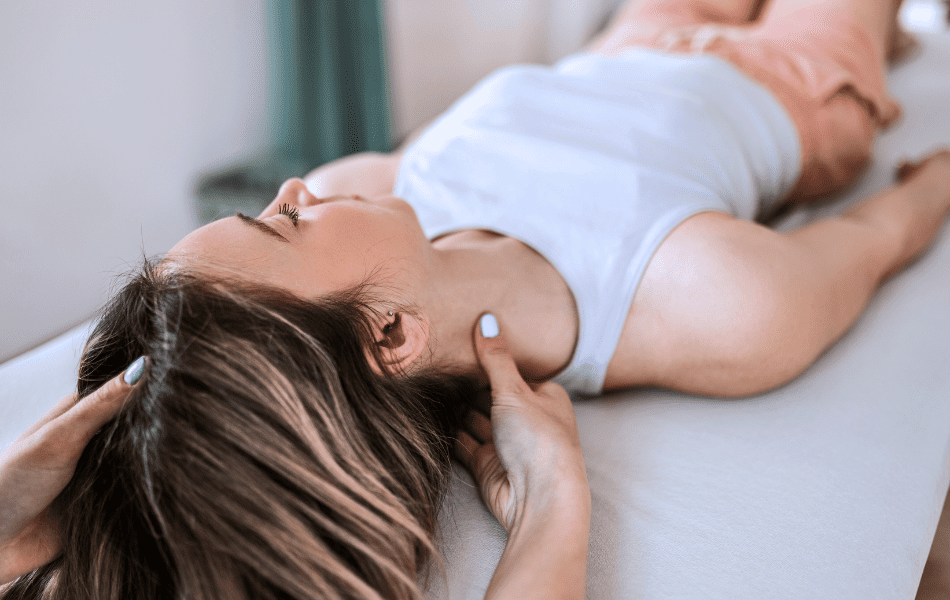Physical therapy for neck & back problems
Neck and back pain can limit movement and functionality. If left unaddressed, these issues may worsen over time, potentially spreading and leading to further restrictions. These conditions can significantly affect overall quality of life, resulting in missed work, decreased activity levels, and ongoing discomfort.
COMMON CAUSES OF NECK & BACK PAIN
The causes of neck and back pain vary widely and can arise from both lifestyle and physiological factors, including:
- Poor Posture: Sitting for extended periods or working at a desk without ergonomic support often leads to muscle strain.
- Injuries and Trauma: Sports injuries, car accidents, and falls can lead to enduring pain without proper treatment.
- Degenerative Conditions: Conditions such as arthritis, disc degeneration, and spinal stenosis are common sources of chronic pain.
- Muscle Imbalances: Weak core muscles or uneven muscle strength can put stress on the spine, causing pain.
- Stress and Tension: Emotional and mental stress can amplify muscle tension in the neck and back.


OUR APPROACH TO TREATING NECK AND BACK PAIN
Our skilled therapists focus on advanced manual therapy techniques that target the root causes of neck and back pain, providing effective and lasting relief. Some of our primary treatments include:
- The Fascial Counterstrain Technique: addresses pain, improves blood circulation, and enhances strength and range of motion.
- Manual therapy: for soft tissue mobilization.
- Graston Technique: to alleviate soft tissue restrictions and enhance the functionality of the affected area.
- Therapeutic exercises: to strengthen muscles and improve flexibility and mobility.
- Cervical and lumbar traction: to relieve pressure on the spinal disks, alleviating abnormal and pain-causing compression of nearby nerves and other spinal structures.
- Passive modalities: include therapeutic ultrasound, laser, heat, ice, or electrical stimulation.
Frequently Asked Questions About NECK AND BACK PAIN
What Causes Lower Back Pain?
Lower back pain can result from various musculoskeletal, neurological, or postural issues. Common causes include muscle strain, herniated discs, spinal stenosis, degenerative disc disease, poor posture, or improper lifting techniques. Chronic conditions like sacroiliac joint dysfunction or facet joint arthritis can also contribute to persistent lower back pain. In some cases, internal organ dysfunction (visceral referral pain) may be involved.
How to Sleep with Lower Back Pain?
To sleep comfortably with lower back pain, use a medium-firm mattress and maintain spinal alignment by sleeping on your back with a pillow under your knees, or on your side with a pillow between your legs. Avoid stomach sleeping, as it can increase lumbar pressure. Supportive sleep posture can reduce stress on the lumbar spine and improve sleep quality.
How to Get Relief from Lower Back Pain?
Effective relief from lower back pain may include core stabilization exercises, advanced manual therapy techniques like Fascial Counterstrain, stretching, and posture correction. Additional treatments such as heat therapy, nerve mobilization, and ergonomic adjustments can also help. A physical therapist can provide a personalized plan based on the underlying cause.
How to Sleep with Neck Pain?
To sleep with neck pain, use a contoured cervical pillow that supports the natural curve of the neck. Sleeping on your back or side is recommended, while stomach sleeping should be avoided. Proper pillow height and alignment help reduce cervical spine strain and minimize morning stiffness or headaches.
How to Get Rid of Neck Pain?
How to Relieve Neck Pain?
Neck pain relief strategies include gentle stretching, heat application, Fascial Counterstrain therapy, and ergonomic corrections. A physical therapist may perform joint mobilization, neuromuscular re-education, and provide customized home exercises. Addressing muscular imbalances and posture dysfunction is key to long-term relief.

Start Your Journey to Recovery
Our goal is to provide comprehensive care that goes beyond mere symptom management. With a holistic approach and evidence-based techniques, we’re here to help you regain mobility, reduce pain, and return to the activities you love.
